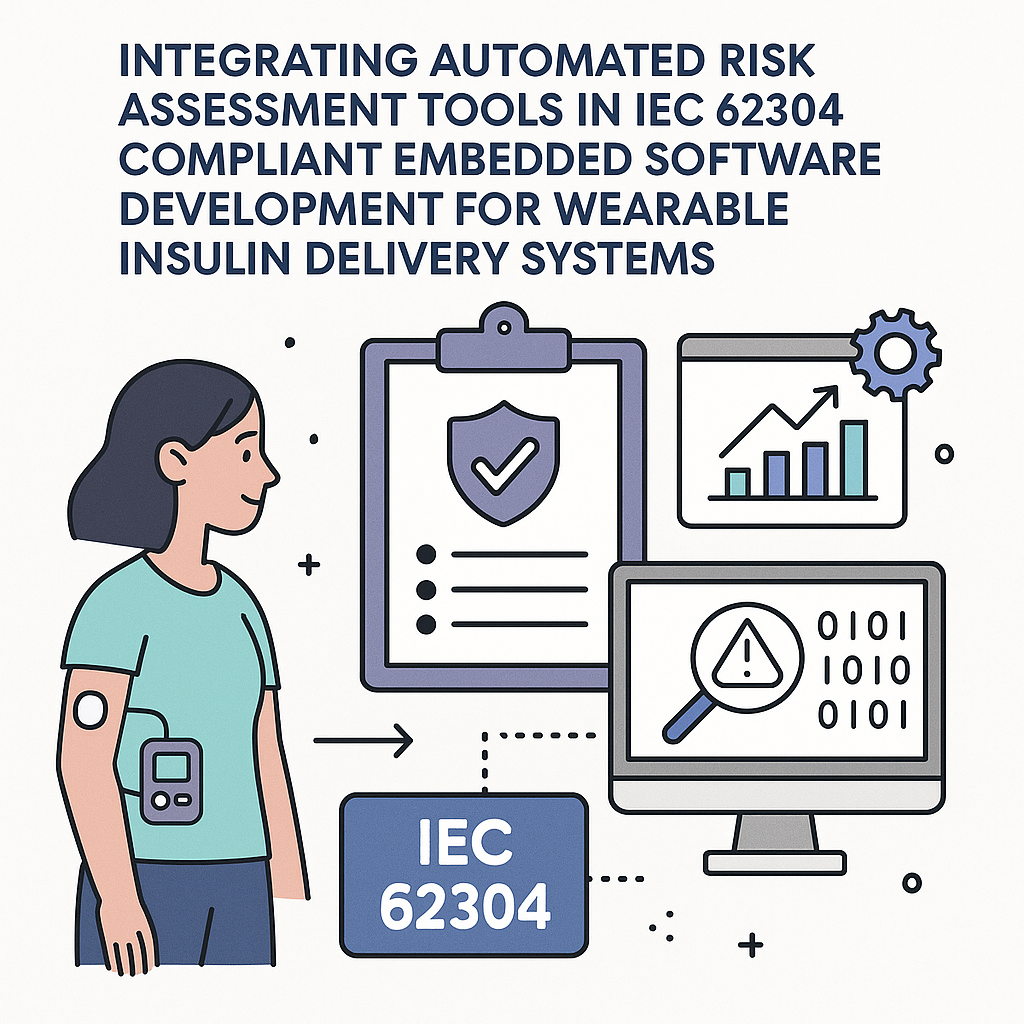Introduction
In the rapidly evolving field of medical technology, wearable insulin delivery systems play a crucial role in managing diabetes. As these systems become more sophisticated, ensuring their safety and effectiveness is paramount. This is where integrating automated risk assessment tools into the IEC 62304 compliant embedded software development process comes into play. This blog will explore the significance of these tools and how they can enhance the development process while maintaining compliance with international standards.
Understanding IEC 62304
IEC 62304 is a standard that outlines the life cycle requirements for medical device software. It provides a framework for the development and maintenance of software used in medical devices, ensuring that they are safe and meet regulatory requirements. Key aspects of IEC 62304 include:
- Software Development Life Cycle (SDLC): Defines the stages of software development from initial concept to maintenance.
- Risk Management: Emphasizes the importance of identifying and managing risks associated with software throughout its lifecycle.
- Documentation Requirements: Mandates comprehensive documentation for traceability and audit purposes.
The Importance of Risk Assessment in Medical Software
Risk assessment is a critical component of the software development process for medical devices. It involves identifying potential hazards, evaluating their risks, and implementing measures to mitigate them. For wearable insulin delivery systems, effective risk management can lead to:
- Improved Safety: Reducing the likelihood of software failures that could harm patients.
- Regulatory Compliance: Meeting the stringent requirements set by regulatory bodies.
- Increased Trust: Building confidence among users and healthcare providers in the technology’s reliability.
Integrating Automated Risk Assessment Tools
Integrating automated risk assessment tools into the development process can streamline compliance with IEC 62304 and enhance the overall efficiency of the software development lifecycle. Here’s how:
1. Streamlining Hazard Identification
Automated tools can assist in identifying potential hazards early in the development process. They can analyze software components and interactions to flag possible risks, reducing the manual effort and potential oversight in hazard identification.
2. Continuous Risk Monitoring
Automated risk assessment tools provide continuous monitoring capabilities, allowing developers to assess risks in real-time as the software evolves. This is particularly useful for agile development environments where changes are frequent.
3. Enhanced Risk Evaluation
These tools often include algorithms that can evaluate risks based on predefined criteria, helping teams prioritize risks effectively. This data-driven approach allows for more informed decision-making regarding risk mitigation strategies.
4. Comprehensive Documentation
Automated tools can generate documentation that adheres to IEC 62304 requirements. This reduces the administrative burden on developers and ensures that documentation is consistent and easy to audit.
Challenges in Integration
While the benefits of automated risk assessment tools are significant, several challenges may arise during integration:
- Initial Setup Costs: The investment in automated tools may be substantial, particularly for smaller companies.
- Training Requirements: Developers and stakeholders may require training to effectively utilize these tools and interpret their outputs.
- Integration with Existing Processes: Adapting existing workflows to incorporate automated tools can be complex and time-consuming.
Best Practices for Successful Integration
To maximize the benefits of integrating automated risk assessment tools, consider the following best practices:
- Conduct a Needs Assessment: Evaluate your organization’s specific requirements and choose tools that align with your development goals.
- Start Small: Pilot the integration with a single project to identify challenges and refine processes before a full rollout.
- Provide Training: Ensure that all team members are trained in using the tools and understanding the risk assessment process.
- Continuously Evaluate: Regularly assess the effectiveness of the tools and processes, making adjustments as necessary.
Conclusion
Integrating automated risk assessment tools into IEC 62304 compliant embedded software development for wearable insulin delivery systems is not just an enhancement; it is a necessity in today’s landscape of medical technology. By streamlining hazard identification, enabling continuous monitoring, and ensuring compliance with regulatory standards, these tools can significantly improve safety and efficacy in software development. While challenges exist, adopting best practices can lead to successful integration and ultimately contribute to better patient outcomes.



